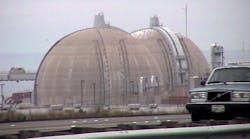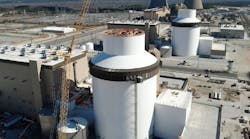The Nuclear Regulatory Commission has confirmed to Southern California Edison that the NRC has identified flaws in how Mitsubishi Heavy Industries used its computer codes to design the failed steam generators at the San Onofre Nuclear Generating Station. The NRC further informed Southern California Edison that it is issuing a “Notice of Non-Conformance” against MHI for its flawed computer modeling in the failed design. The NRC is also citing SCE for failing to ensure that MHI’s modeling and analysis were adequate.
In particular, the NRC reports indicate that MHI’s use of its computer codes in the design of the steam generators inaccurately predicted thermal hydraulic conditions in the steam generators, leading to tube vibration and wear, and a steam generator tube leak. The NRC also found that MHI embedded the same computer modeling error in the design of steam generators at four other nuclear plants, although none developed the fluid elastic instability that caused San Onofre to shut down. The NRC inspection findings reinforce an NRC Augmented Inspection Team report a year ago that identified MHI’s computer modeling errors. The San Onofre units were permanently shut down in June.
Pete Dietrich, SCE senior vice president and chief nuclear officer, said it is not unusual for the NRC to cite the licensed operator of the nuclear plant as a responsible party even when problems are created by a vendor or contractor, and that SCE takes its licensee oversight responsibilities seriously. The NRC’s decision to also directly cite MHI reflects the fact that MHI created the flawed design and also failed to properly perform the verification and checking that SCE hired MHI to do.
“Mitsubishi designed the system. Mitsubishi built the system. Mitsubishi’s system failed. They are the experts. SCE was the customer,” Dietrich said.
“SCE is responsible for the safe operation of San Onofre and will continue to make safety our top priority as the plant is decommissioned,” Dietrich added. “MHI is accountable for its failure to provide properly functioning steam generators.”
Dietrich said SCE relied upon MHI, the qualified vendor authorized to design, manufacture and test the steam generators in accordance with American Society of Mechanical Engineers Code requirements, to meet specifications. Dietrich added that during the design of the steam generators, SCE appropriately questioned MHI about its design and use of computer models on multiple occasions. MHI repeatedly reassured SCE that its design and models were correct.
In its letter to SCE, the NRC also noted that MHI hired consultants with expertise in designing large steam generators, but that MHI did not rigorously evaluate their concerns about MHI’s computer modeling.
No financial penalties were imposed by the NRC.
On July 18, SCE served MHI with a Notice of Dispute http://www.songscommunity.com/docs/noticeofdispute.pdf for breach of contract and warranty for supplying defective steam generators that resulted in the permanent closure of San Onofre. The notice details MHI’s failures in designing the steam generators.
SCE announced June 7 that it would permanently shut down San Onofre Units 2 and 3, and begin the process to decommission the facility.
SCE has provided an online Digital Document Library containing thousands of pages of primary documents about the history of the design and testing of the Replacement Steam Generators, and a summary of design review minutes at http://www.songscommunity.com.


